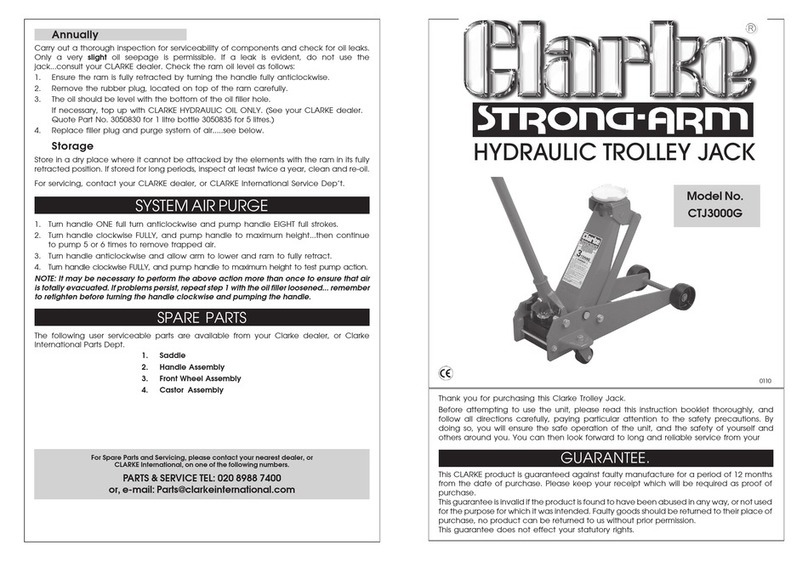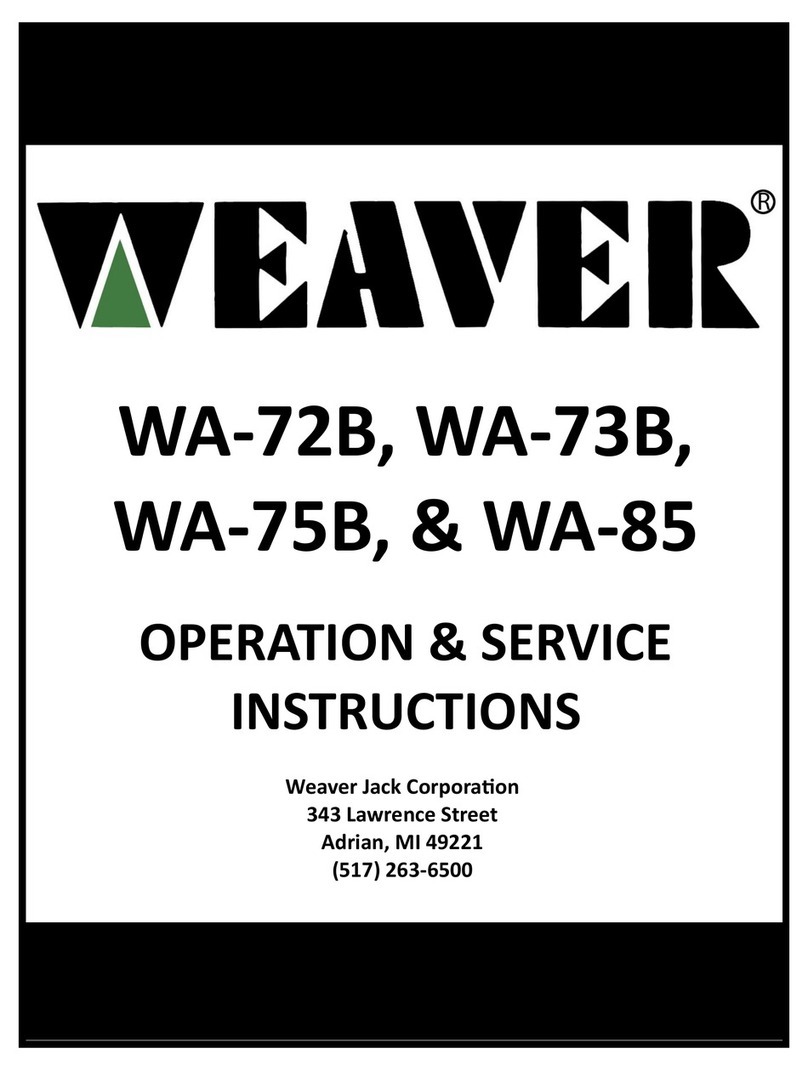
6
Troubleshooting
SYMPTOMS CORRECTIVE ACTION
1. Jack will not raise saddle.
1. Check the oil level.
2. Perform the Ball Valve Test
2. Oil spurts out the vent hole.
1. The jack is overfilled with oil.
3. Jack will only lift part way up.
1. It may be low on oil. Check and refill.
4. Jack will not lift a load.
1. Check for proper oil level.
2. If pumping falls to raise the rated load, the
lower ball valve may be leaking, and it should
be inspected for dirt or other obstructions.
5. If the load rises on the down
stroke of the handle and then
immediately settles back down
while forcing the jack handle up.
This means that the upper ball valve may be
leaking, and it should be inspected for dirt or
other obstructions.
6. Jack bleeds down while under
load.
1. The Release Handle may not be closed
2. The Release Valve may be leaking. Replace
the release valve packing housing “O” Rings.
3. The Release Needle Valve may need to be
adjusted.
7. Jack only rises on half-stroke,
and then settles back down while
forcing the handle up.
This means that the jack may be Air Bound.
To Relieve When Air-Bound
1.Should the oil supply run too low, the Jack may become air-bound and work on only a half stroke of the
handle. Fill the jack with oil, and then raise the saddle, and then using the Release Lever (lowering lever)
lower the saddle while holding the fool pedal depressed. This will flush out any air in the system, and excess
oil may then run out of the vent. Repeat if necessary. Be sure that the jack is properly filled with oil before
putting it back in service. Oil should cover the piston rod. If you cannot pump the Jack Saddle to full height,
raise the Saddle by hand and then perform this operation
Ball Valve Test.
If the Jack will not raise at all, then the Ball Valve may be obstructed by debris. Open the Release Valve and
keep it open. Raise the Saddle lift arm manually to full height. Now lower the Saddle by pushing it all the way
down – this will flush out any debris in the Ball Seats. Close the release valve and try to pump up the Jack. If
it now will raise and hold, then the Ball Valve may need to be serviced.


























